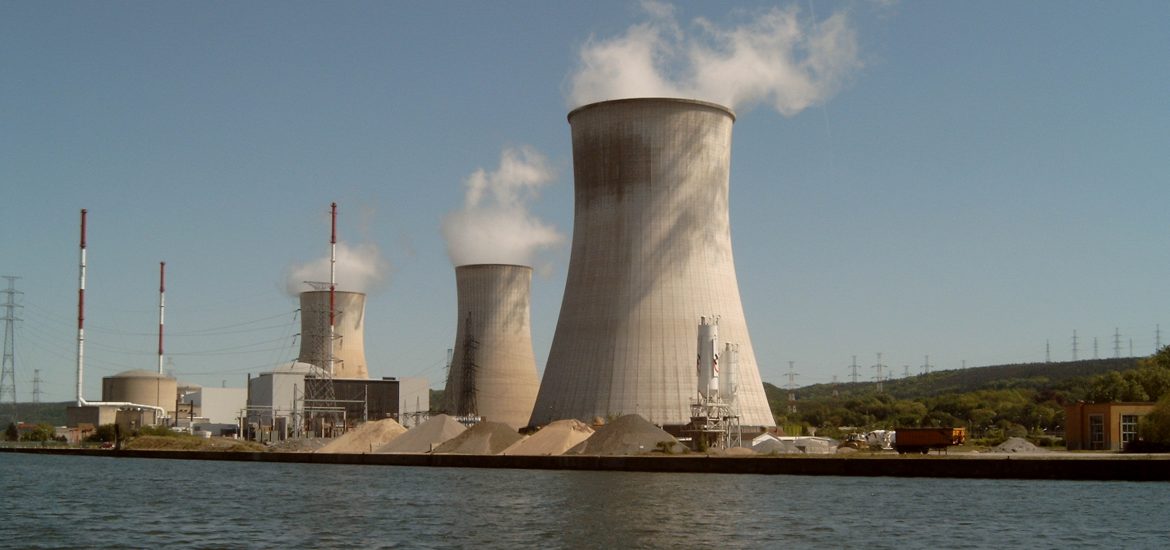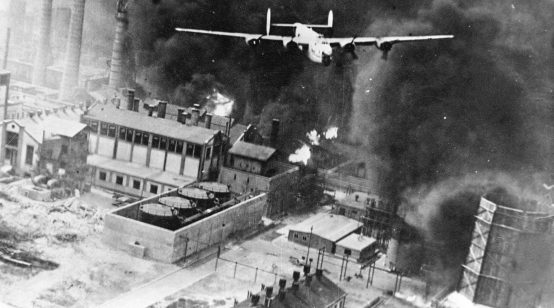
What is the most dangerous nuclear power plant? Fukushima? Chernobyl? The answer is neither. It is the one closed prematurely.
The Germans are fretting about Belgium’s nuclear power plants and want them closed, even though the Belgian regulator has judged them safe to operate.[i] The Lithuanians are worrying about reactors being built in Belarus, even though they are among the most modern and safe ever built, and inspections have found no major flaws. Some Swedes are agonizing about the new reactor planned in Finland. Greenpeace and other anti-nuclear organizations are likewise raising alarm about the safety of practically every nuclear power plant on the planet. Wherever a nuclear power plant is, it seems that fear follows.
But does reality justify these fears?

The graph below draws from the most comprehensive studies and data on the safety of the major energy sources.[ii] As we can see, nuclear is the safest way to produce reliable baseload energy, and in the same range as wind and solar. These figures account for all aspects: the possibility of accidents, a plant’s lifecycle, uranium mining, fuel production, and nuclear waste handling for 100,000 years.
So, if nuclear is the safest energy source…
If nuclear is our safest energy source, it means that whenever we close a nuclear power plant prematurely or do not build a new one because of political (and therefore financial) risks, another, more dangerous source will be used instead.
Even replacing nuclear with wind or solar power, although remarkably safe energy sources, is a bad idea. Yes, we can (and should) build wind and solar, but if we use wind and solar to replace nuclear, we are not using them to replace coal. From a safety and emissions perspective, we would be spending money and resources to improve neither. Empirical evidence shows that fossil fuels have partly replaced closed nuclear plants.[iii] For example, political difficulties of re-starting the nuclear fleet in Japan after the Fukushima accident has led to plans for dozens of new coal plants.[iv] In the United States, closures of nuclear plants have led to increased natural gas and coal consumption.[v] In Finland, politicians denied permission to build a new nuclear reactor in the early 1990s, which led to the construction of the country’s biggest coal plant.
Perhaps the most salient example comes from Germany. Around 2000, Germany decided to close its nuclear power plants prematurely, instead of its coal plants, and replaced them with wind and solar as part of its Energiewende. From the standpoint of limiting the damaging effects of carbon emissions on public health and climate, this was a disaster.
Health Consequences of Coal
Several important reports were published on the health consequences of air pollution in 2016. These found that respiratory issues such as asthma often led to deteriorating health and even premature death. Europe’s Dark Cloud and its sequel, Lifting Europe’s Dark Cloud,[vi] revealed the dangerous consequences of coal combustion on the health of Europeans. The OECD’s The Economic Consequences of Outdoor Air Pollution[vii] calculated the staggering global health and human costs of air pollution from fuel combustion today, and what the likely trajectory of our burning habits will cost in the future. All three make for sobering reading.

Figure 1: Premature deaths caused by coal sorted by emitting and impacted country. Image source: Europe’s Dark Cloud (2016), published by CAN, HEAL, WWF and Sandbag.
According to “Europe’s Dark Cloud,” coal caused over 22,000 premature deaths in Europe in 2013, largely due to air pollution. According to its sequel report, even as air pollution regulations have tightened, coal plants that were exempt from latest EU directives accounted for 60% (13,700) of these fatalities. Even if Europe’s situation slowly improves as older coal plants retire and are replaced by something else (new coal plants, natural gas, bio, wind, solar and nuclear, depending on the country), the global situation is certain to get worse. According to the OECD’s report, the current annual health costs from outdoor pollution are set to rise from $21 billion in 2015 to $176 billion per year (in 2010 USD).
Political Correctness Goes Both Ways
From this perspective, it is both ridiculous and extremely insensitive for Germans to demand that Belgium close its nuclear plants because of safety concerns.[viii] The Belgian regulator has judged them safe to operate and are best situated to make this judgement, not the public, media, or anti-nuclear activists, and certainly not German politicians.
Roughly 3,630 Germans died prematurely in 2013 due to coal pollution from plants in and around Germany. In the same year, 270 Belgium citizens died prematurely each year because of German coal pollution. Fatalities from civilian nuclear reactors or nuclear accidents in Germany or Belgium – or anywhere else in the western world – were very close to zero. Actually, coal combustion causes more sickness and death every single day than civilian nuclear power has caused in its entire history. To make the math absolutely, provocatively clear here: we could have a Chernobyl-sized accident every year in Europe and it would still be a significant public health improvement over our self-imposed coal deaths.[ix]
Many European countries are thinking about shutting down and not re-building their nuclear fleets, while selling these plans to the public on safety concerns over nuclear. By doing so, they are endangering the very safety of that public they supposedly protect. We should be closing coal instead.
[i] https://www.politico.eu/article/germany-nuclear-energy-belgium-doel-tihange-targets-the-atom/
[ii] The data of the graph is from: https://www.nextbigfuture.com/2016/06/update-of-death-per-terawatt-hour-by.html while the numbers on nuclear come from one of the biggest studies on energy externalities, the externe-project: http://www.externe.info/externe_d7/?q=node/4.
[iii] See for example the closures in the US: https://www.eia.gov/todayinenergy/detail.php?id=28572. Also, in Finland TVO was denied the political licence to build a new reactor for Olkiluoto Nuclear power station in the early 1990s. This denial resulted in them building the biggest coal plant in Finland, Meri-Pori, instead.
[iv] http://www.sciencemag.org/news/2018/05/bucking-global-trends-japan-again-embraces-coal-power
[v] https://www.eia.gov/todayinenergy/detail.php?id=28572
[vi] Europe’s Dark Cloud – How coal-burning countries are making their neighbours sick (2016), http://env-health.org/IMG/pdf/dark_cloud-full_report_final.pdf; Lifting Europe’s Dark Cloud – How cutting coal saves lives (2016), http://env-health.org/IMG/pdf/_lifting_europe_s_dark_cloud_-_final_report.pdf.
[vii] The Economic Consequences of Outdoor Air Pollution, OECD (2016), https://www.oecd.org/environment/indicators-modelling-outlooks/Policy-Highlights-Economic-consequences-of-outdoor-air-pollution-web.pdf
[viii] https://euobserver.com/energy/133154
[ix] There have been less than 100 proven casualties from Chernobyl, while WHO estimates that there might be 4,000 – 9,000 additional cancer deaths during the next 80 years due to radiation. http://www.who.int/ionizing_radiation/chernobyl/backgrounder/en/






[…] Energy Reporters: The Most Dangerous Nuclear Power Plant […]
[…] Lees het artikel hier: https://www.energy-reporters.com/opinion/the-most-dangerous-nuclear-power-plant/. […]
Hear, hear.
[…] sources https://www.energy-reporters.com/opinion/the-most-dangerous-nuclear-power-plant/ […]
The most dangerous reactor by far has never been permitted, inspected or approved by anyone, it is poorly shielded and the radiation kills thousands of people every year most through malignant melanoma and if it goes rogue on us it is set to destroy our power grids and satellite networks and indirectly kill millions. It is of course the sun and virtually everyone is totally oblivious to the hazards, if things play out the way the usually do it will be virtually impossible to get their attention till it is too late. I am speaking of the next Carrington event and it is not a question of if but when.